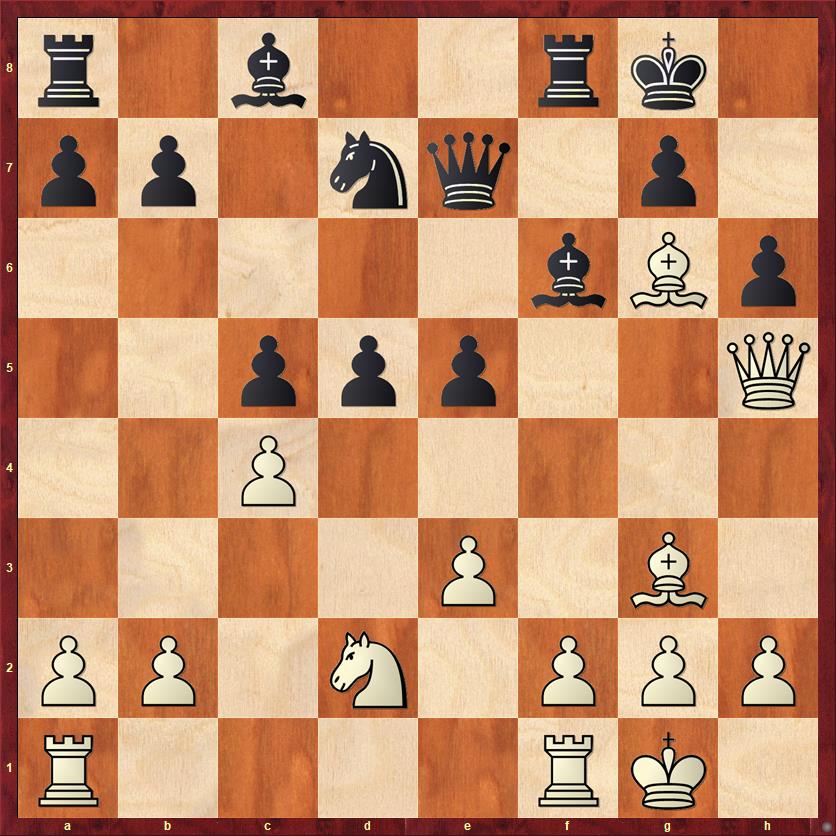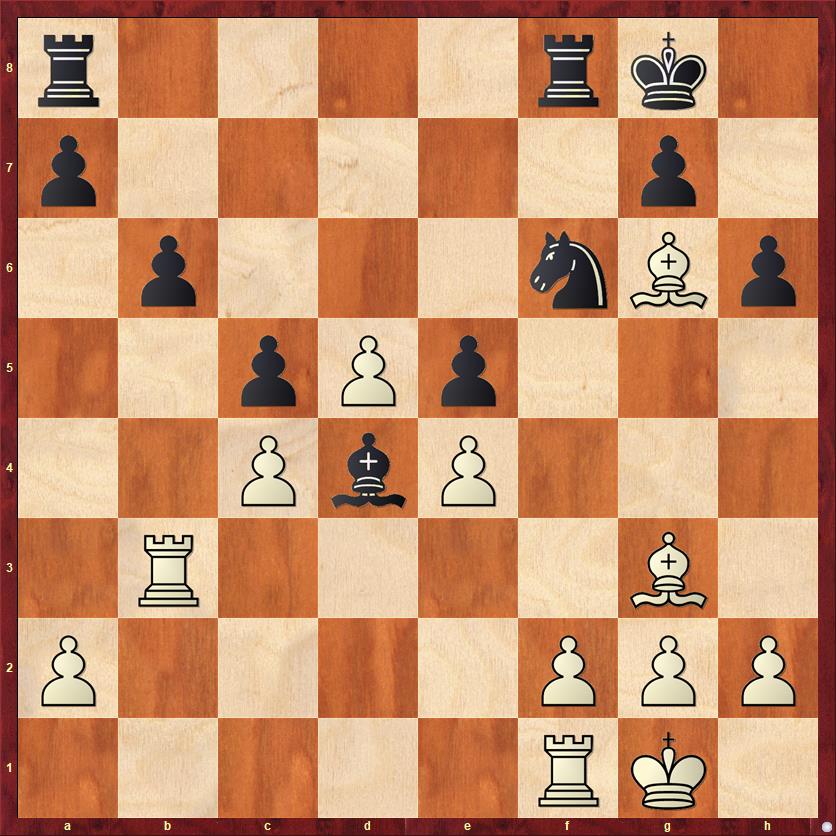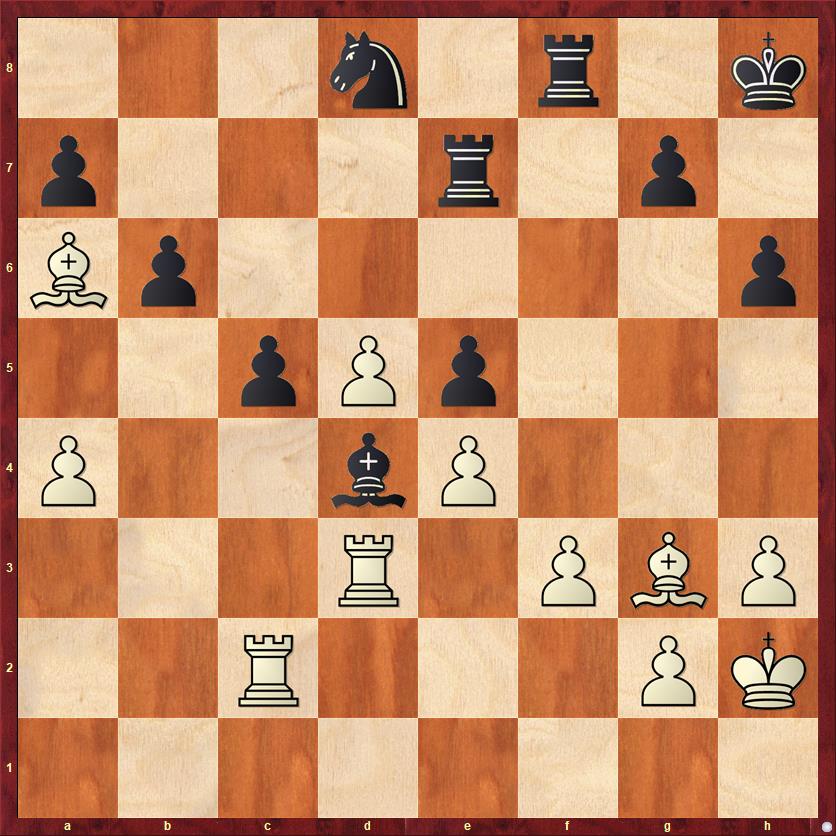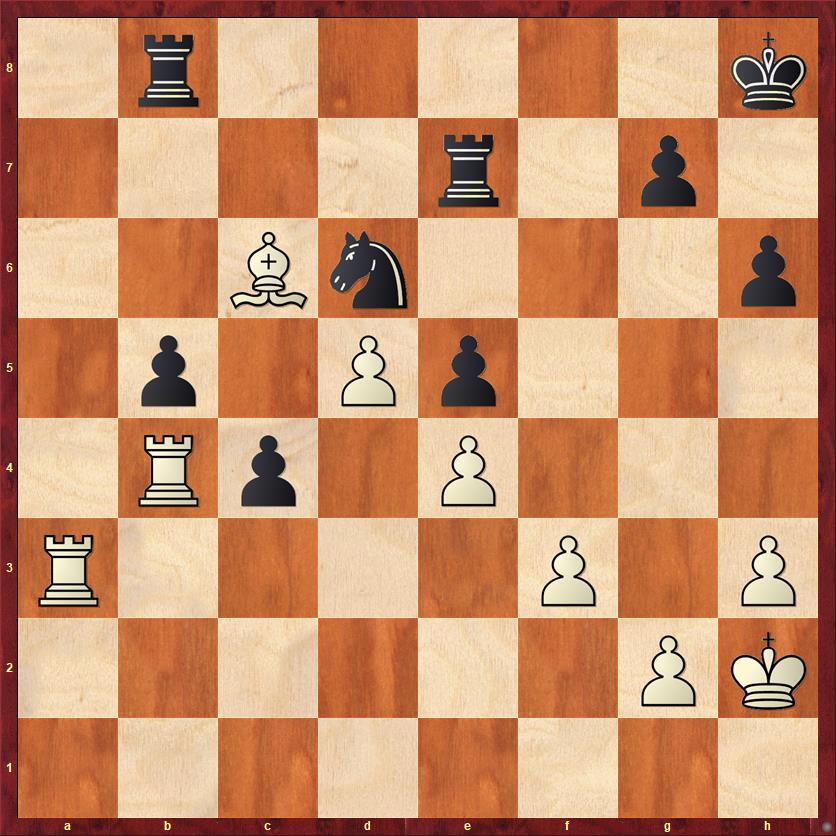My second year in Ohio was a great time in my life, but not such a great time for my chess. Some of the good things: Kay and I had bought our first house, which was an easy one-mile walk from my office on campus. She was absorbed in sprucing the place up, repainting it, installing cute shutters — “nesting,” you might say.
Most of all, 1991 was for us the Year of the Cats. In the fall of 1990, we had found three kittens in the woods and brought them home with us. We named them Pixel, Chutney, and Maikai (Hawaiian for “beautiful”). In 1991 they grew into house cats. They discovered winter and snow, and spring and trees and roofs. Maikai loved to get on our roof and meow piteously as if stranded, so I would have to get out the ladder and “rescue” her. To tell the truth, I loved it too. Then they discovered summer, and chipmunks and moles (which they would bring inside, dead or alive, as a present to us). And they discovered fall, and huge piles of leaves.
Unfortunately, the Year of the Cats was also the year when my chess went to the dogs. As you’ll remember from my last post, I had reached a personal rating high in March 1990; but, as I wrote in my diary near the end of 1991, “Since then, for over a year and a half, I have had only two kinds of results — mediocre and terrible. I can’t beat experts any more, let alone masters. We’re not talking about a slump any more, we’re talking about an actual decline in playing strength.”
Well, actually we’re talking about a lot of things other than a decrease in chess ability. We’re talking about a change in life priorities; I was married now, and Kay had to come first. We’re talking about a change in study habits. We’re talking about a lack of serious competition in the small college town surrounded by corn fields where I now found myself. I hadn’t figured out yet how to adjust to those new realities.
So, the bottom line is that I don’t have any anthology-quality games to show you from 1991. But I’ll show you my last game of the year, in a tournament appropriately called the Turkey Open. It was another discouraging event for me, in which I scored one win, one draw, and three losses, with the only win coming against a much lower-rated player. My rating dropped to 2122, more than 120 points below my maximum. But that was the lowest it would go. In spite of all the doom and gloom in my diary, the next year my rating started to go up again.
The tournament ended on a positive note. In the last round I played against Tom Britt, a master who was also having a poor tournament. My position looked very grim at one point, but I fought back with a pawn sacrifice, which enabled my pieces to get organized. Tom made a fairly simple tactical mistake that let me win back the pawn, but even if he hadn’t, I still think that he had some difficult strategic questions to solve.
In the endgame I could have pressed for a victory, but I was happy enough saving a draw. The game was a pretty good metaphor for the year: very imperfect, but improving near the end and with promise for a better year to come.
Tom Britt — Dana Mackenzie, 11/23/91
1. d4 Nf6 2. Nf3 e6 3. Bg5 d5 4. e3 h6 5. Bh4 Be7 6. Bd3 c5 7. c3 …
This was a good opening choice by Tom. The Nimzo-Indian was my regular defense to 1. d4, but I never liked playing against this ultra-solid “triangle” setup for White. I think that Black has to be extremely patient, and patience is not my strong suit.
7. … Nbd7 8. Nd2 O-O 9. Ne5 …
Here’s another thing I have never liked: playing defense against an opponent who has a space advantage on the kingside.
9. … Ne5 10. de Nd7 11. Bg3 f5?!

FEN: r1bq1rk1/pp1nb1p1/4p2p/2ppPp2/8/2PBP1B1/PP1N1PPP/R2QK2R w KQ f6 0 12
This move and my next four moves all show the symptoms of a player who is not comfortable. As I said, I hate playing with a space disadvantage, and so I was willing to lash out with 11. … f5, which creates serious weaknesses in my kingside (especially the g6 square).
Stronger players, or more patient players, would recognize that you are more likely to lose a game because of weaknesses than because of less space. Fritz (which, being a computer, is both stronger and more patient than me) thinks that Black should have played 11. … Qc7! It evaluates the position as equal, but leaning ever slightly (0.16 pawns) toward Black.
The good thing about 11. … Qc7 is that it forces White to reveal his intentions. Black gains information, without having given up any information himself and without creating any weaknesses. Will White play the solid 12. Nf3? If so, then he loses a lot of the immediate attacking possibilities given by 12. f4 or 12. Qh5. Will White play the more aggressive 12. Qh5? If so, he leaves his queenside somewhat exposed. Will White go for the ultra-aggressive 12. f4? In that case, White has created some very significant weaknesses in his own position, e3 and b2, which Black can target right away with 12. … c4 and 13. … Qb6. This line will take some courage for both players; White will have to sac a pawn but he will get some play for it. In any case, by playing 11. … Qc7, Black will find out how White intends to play and he can then plan his strategy accordingly.
Compare this to 11. … f5, where Black has created weaknesses and revealed his own intentions. It’s just a very amateurish move. But things will get worse before they get better!
12. ef Bxf6
Also debatable; the computer thinks that 12. … Nxf6 is slightly better. But I was probably worried about Nd2-f3-e5-g6, which is hard to stop.
13. Qh5 Qe8?
A terrible move, which gives away a tempo for no reason at all. Either I just forgot that White could play 14. Bg6, or else I was worried about the queen coming to g6 and so I was trying to get White to put the bishop there first. Anyway, my problem is that my queenside pieces are languishing. It’s urgent to get them out with 13. … c4 followed by … Qb6, … Nc5, … Bd7, and perhaps … Be8. Fritz says that the position is still completely even after 13. … c4 14. Bc2 Qb6 15. O-O-O Nc5 16. Qg6 Bd7, for example. Another option, which I would be more likely to play, is 16. … Nd3+, which sacrifices a pawn to defuse White’s attack. We’ll see that I employed a similar strategy in the game, but I got much less compensation for it.
Notice, also, that in the above variation, all Black’s moves (except the first) are piece moves. When you find yourself making a lot of pawn moves (moves 11, 15, 16) and queen moves (moves 13, 14), it’s not usually a good sign.
14. Bg6 Qe7 15. O-O e5 16. c4 …
Tom was surely expecting me to play 16. … d4, creating even more weaknesses for White’s pieces to target.

FEN: r1b2rk1/pp1nq1p1/5bBp/2ppp2Q/2P5/4P1B1/PP1N1PPP/R4RK1 b – – 0 16
16. … b6!?
Boy, this was a tough move to make. It’s just an out-and-out pawn giveaway; I have no idea how and whether I will ever win back the pawn. It’s an admission that I’ve screwed up, but instead of letting White’s pieces swarm all over my kingside, I will keep the position closed, activate my own pieces (finally) and try to keep his extra pawn (d5) under lock and key.
Roman Parparov, a reader of this blog, recently recommended John Watson’s book Secrets of Modern Chess Strategy to me. Watson has some very interesting comments about precisely this kind of position. To put it mildly, he thinks that protected passed pawns, like the one that is about to come into existence on d5, are overrated. Here’s what he says:
“What [Nimzovich] emphasized, and what remains true to this day, is that passed pawns could be either weak or strong to the extent that they were able to be restrained and blockaded.” And about his particular type of position, the passed pawn on d5, he writes, “White has a protected passed pawn and no weaknesses. Traditionally, this in and of itself was considered an advantage. But the ideal placement of Black’s knight [on d6] can balance or in some cases even outweigh [my emphasis added — DM] White’s passed pawn. This is because the knight firmly blockades the pawn, attacks e4 and c4, and also supports both the undermining move … f5 and the expansion of the majority by … b5.” We’re going to see all of this in the present game, except that I don’t have an f-pawn. So the theme of … f5 is gone, but we’ll see a different theme of pressure on the f-file.
From all this, it’s clear that if Black can put a knight on d6, the knight will be very well placed. The devil is in the details, of course, but Black certainly will have chances to save a draw. My opponent clearly had not read Watson’s book, in part because it was written in 1998 and this game was played in 1991.
Possibly 16. … Nb6 would have been an even more direct way to execute this plan, with the idea of not recapturing after 17. cd but simply developing with 17. … Bd7, allowing White to play 18. e4, and then repositioning the knight to c8 and then d6. But in any case, I think the really radical thing about either move (16. … b6 or 16. … Nb6) is that Black intends to make no effort to prevent 17. cd and 18. e4. I’m pinning my hopes on the Nimzovichian ideals of blockade and counterattack.
Britt accepts my offer, hook, line, and sinker.
17. cd Bb7 18. e4 Bg5
I like this quirky move. It’s part of a plan to upgrade this piece’s lodging from the basement to the penthouse.
19. Nc4 …
One point of my last move is that after 19. Nf3? Nf6 20. Qh3 Bc8 White’s queen would almost be trapped. White can save her with 21. Bf5, but after 21. … Nxe4 that imposing White center is already starting to be torn apart.
19. … Ba6 20. b3 Bxc4!?
Another decision that flies in the face of conventional wisdom. Most people like bishops better than knights, but you always have to take into account the concrete features of the position. (That’s another thing that Watson is very big on: concrete considerations versus general principles.) After White’s knight is removed, it just feels as if all the energy and dynamism of his position is gone. Also, this move had a specific purpose, which was to get my bishop to d4 via d2. This is what I mean by concrete considerations. This maneuver … Be7-g5-d2-c3-d4 is unusual to say the least. But to arrive at the truth of any position, you have to take into account both the “typical” features and the “abnormal” features.
21. bc Bd2 22. Bf5 Nf6 23. Qg6 Bc3 24. Rab1 Qe8 25. Rb3 Qxg6 26. Bxg6 Bd4
Plan executed! Time for another diagram.

FEN: r4rk1/p5p1/1p3nBp/2pPp3/2PbP3/1R4B1/P4PPP/5RK1 w – – 0 27
Comparing the position to the last diagram, I think that Black has made a lot of progress. White’s most dangerous attackers, the queen and the knight, have been removed. Black’s bishop on d4 has turned from a liability into a piece with significant influence: it both restrains the f-pawn and also interferes with the mobility of White’s rooks. If Black can get his knight to d6, that piece will also be in its ideal position.
We should also compare minor pieces. Which bishop do you like better, Black’s bishop on d4 or White’s bishop on g6? For now, I like Black’s better. Which do you like better, White’s bishop on g3 or Black’s knight on d6 (assuming he can get there)? Again, I think that the nod has to go to the knight.
I’m not going to argue that Black has equalized yet. There are still some significant concerns. First, how is the knight going to get to d6? He has to pass through e8 first, where White can take him. Here we should do another minor-piece comparison. Which do you like better, Black’s dark-square bishop or White’s? I think that the nod has to go to White’s. The fatal flaw of my bishop on d4 is that it cannot go backwards. In particular, it cannot defend the pawns on a7 and b6. So White should trade his light-squared bishop for Black’s knight (if given the opportunity), then play a2-a4-a5, followed either by taking on b6 and ganging up on the b-pawn, or else letting Black take on a5 and ganging up on the two isolated a-pawns.
Also, another concern for Black has to be the possibility of White sacrificing an exchange on d4 at some point, in order to liberate his bishops and unleash the blockaded pawns on e4 and d5.
In short, White has ways to win, but he needs to think concretely, too. He can’t expect the two bishops to win all by themselves, or the protected passed pawn on d5. “General principles” and “conventional wisdom” mean nothing if you don’t have a plan.
27. h3 Ne8 28. Bf5? …
A mistake in two different ways. First, and most simply, it’s a tactical blunder that loses a pawn. But it’s also a strategic blunder, because this was White’s chance to exchange off Black’s knight before it reaches its perfect outpost on d6. I think this was a case where the strategic misjudgment led to the tactical error. White continues to think that his two bishops are stronger than Black’s bishop and knight, so he refuses to exchange the light-squared bishop and instead tries to find a better place for it.
28. … Nd6 29. Be6+ Kh8
Now White has to decide which pawn to save, the e-pawn or the c-pawn, because he can’t save both.
30. Re1 Nxc4 31. a4 Rf6 32. Rd3 R8f8 33. Rd3 Re8?!
This looks like time-trouble nervousness. I was worried about Rxd4 possibilities and just trying to make it to the time control without any drastic changes to the position. Probably a better plan is to start mobilizing my queenside pawns with 33. … a6. Definitely a worse plan would be 33. … g5? 34. Rxd4! cd 35. Bxe5, which is exactly the sort of thing I’m afraid of.
34. Kh2 Na5 35. f3 Re7 36. Rc2 Nc6 37. Be1 Nd8 38. Bc8 Rc7 39. Ba6 Rf8 40. Bg3 Re7

FEN: 3n1r1k/p3r1p1/Bp5p/2pPp3/P2bP3/3R1PBP/2R3PK/8 w – – 0 41
Made it to the time control, and now we can breathe again. The last few moves were better for White than for Black. For no very good reason I have relocated my knight from c4 to d8, where it is a passive piece that gets in the way of my own rooks. I did manage to evict White’s bishop from e6, but that is probably more of a symbolic than an actual victory. On a6 the bishop does a good job of tying down my queenside pawns. Also, White has managed to solve the problem of his f2 pawn, so my bishop on d4 has reduced importance (although it is still useful for interfering with White’s rooks).
41. Be1? …
It must have been very tempting to sacrifice the exchange with 41. Rxd4!? cd 42. Rc8! How is Black going to escape the marauding White bishops? Fritz’s computer analysis gives 42. … Rg8! (to unpin the knight) 43. d6! Re6 44. Rc7 d3! It’s not clear whether the humans playing this game would have found these moves, but it is really interesting to see how both of these supposedly strong protected passed pawns end up being used as sacrificial bait. Remember what Watson and Nimzovich said about passed pawns being valuable in proportion to their ability to move? In this case, both d-pawns are unblockaded and ready to create mischief, so both sides need to take them off the board. After 45. Bxd3 Rxd6 Black seems to have escaped the worst.
Another possibility is 41. Rxd4!? cd 42. Be1, but here the saving move seems to be 42. … Nb7!, planning 43. Bb4 Nc5 44. Bxc5 bc 45. Rxc5. Black has given back a pawn but more importantly he has gotten rid of one of the bishops.
The computer’s recommendation is… none of the above! White should continue with the simple plan of 41. a5. Black’s tangled-up pieces can’t defend the a- and b-pawns well enough; as I mentioned a long time ago, the bishop on d4 is no help at all.
Tom’s move, 41. Be1, seems too indecisive. Maybe he’s trying to set up the sacrifice on d4 a little bit better, but it doesn’t work. Or maybe he was just playing for a draw at this point. Anyway, it gives my knight time to return to its favorite outpost, and after that the initiative shifts back to Black.
41. … Nf7!
Now, after 42. Rxd4 ed 43. Bg3 Rd8, White’s passed pawns will be under control.
42. Bb5 Nd6 43. Bc6 …
A very amusing position. Both bishops, Black’s bishop on d4 and White’s bishop on c6, are supposedly “active” but are in reality trapped in prisons of their own making.
43. … a6
Better late than never. White now has to start thinking seriously about how to stop Black’s pawn wave.
44. Rb3 Rb8 45. Bc3 c4 46. Rb4 Bxc3 47. Rxc3 b5 48. ab ab 49. Ra3 …

FEN: 1r5k/4r1p1/2Bn3p/1p1Pp3/1Rp1P3/R4P1P/6PK/8 b – – 0 49
Can you imagine Black being told, in the position after White’s move 16, that he would eventually reach this position? It would be like a dream. White’s pieces are reduced to passivity. The rook on b4 can’t move because Black’s passed pawns would start rolling. The bishop on c6 can only go to a8. The other rook has a little bit more activity, but the only “threat” it can create is actually a mirage. That is, if White plays Ra5 and Bxb5, Black would simply play … Rc7 and start pushing the c-pawn. White would have to give up the bishop to stop it. So basically White is reduced to king moves, pawn moves, and ineffectual rook moves on the a-file.
The question is: can Black actually win? With the queenside and center pawns blockaded, there is really only one way for Black to make progress: a minority attack on the kingside. So 49. … g5! would probably be the most promising approach. The minority attack has a little bit of extra “juice” because White’s king could get caught in the crossfire, as seen in the line 49. … g5 50. Ra5 h5 51. Kg3 g4 52. hg hg 53. Kxg4?? Rg8+ followed by 54. … Rh7 mate.
Of course White isn’t going to walk into a checkmate this way, but the line shows that the minority attack does have to be respected and White can’t just win a pawn on g4. White could try to defuse the attack with 51. g4 (instead of 51. Kg3) but this creates its own problems: now the f-file is weak. After 51. … h4 52. Kg2 Rf7 53. Ra3 R8f8 a new and ghastly threat emerges: Black threatens to sacrifice on e4. White can prevent this with 54. Rb2, but definitely he is under pressure.
It would be interesting to see what would have happened, but now let’s get back to reality. In reality, I was just happy to have saved a really bad position, and I didn’t really want to press my luck by playing for a win. Don’t forget, this game came in the last round of a tournament where I had been playing badly, and at the end of a year in which I had been playing badly. My confidence was nowhere near as high as it had been a couple years earlier.
Let’s be honest, it takes a certain amount of confidence to push two pawns forward against three and realize that it’s not just a suicide mission. It also takes an understanding of the concept of a minority attack. In 1991, I didn’t have either the confidence or the understanding. The last few moves of the game show that I was perfectly happy just to let the game peter out to a draw.
49. … Kg8 50. Kg3 Kf8 51. Re3 Rf7 1/2 – 1/2
Even now, the minority attack was still a possibility with 51. … g5, but whatever.
Lessons:
- You’ll lose more games by creating weaknesses than by accepting a space disadvantage without weaknesses.
- Sometimes the best move is the one that forces the opponent to declare his intentions, while not revealing your own.
- In a bad position, think about improving the position of your pieces and trading off your opponent’s best pieces, even if it costs material.
- Protected passed pawns are not an advantage all by themselves, when they can be blockaded and especially when they can be blockaded by a knight.
- Passed pawns are an advantage in proportion to their mobility. A passed pawn that has become “unstuck” can cause great chaos in the opponent’s position.
- Minority attacks are a non-intuitive but often surprisingly strong plan, where one pawn attacks two, or two attack three, with the goal of weakening the opponent’s pawn structure and gaining open lines for your own pieces.
- General principles and conventional wisdom mean nothing if you don’t have a plan.



{ 1 comment… read it below or add one }
When I was a young player in the 1970’s and 1980’s, I read about the minority attack in books, but it never made sense to me. Advance your minority, give your opponent a passed pawn?! Because it will somehow be weak? I basically wrote it off as “too positional for me.” (I was definitely that kind of player.)
I then quit playing for a few decades and restarted around 2014. By and by, as I fought to get back to my former rating, I noticed that I was losing quite a few games to the sudden collapse of the pawns on one of my flanks. There was this Thing that happened, I didn’t understand quite how it happened, but it wrecked my pawn structure and then I’d lose them all. Missed a win against an Expert (managed to fight to a draw) because of this Thing.
One day it dawned on me to my complete amazement that the Thing was, precisely, the minority attack. I nerved myself to play one in a tournament game, and darned if it didn’t do the job!